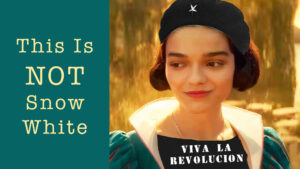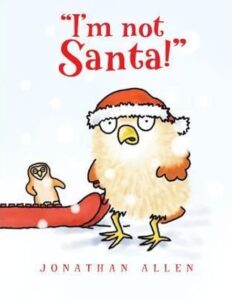Netflix has a very poor record when it comes to adapting works of classic literature. Instead of coming up with original stories, the streaming giant tends to pick off the skin of beloved characters and use them to act out modern day political and social issues. It’s frustrating to prejudge a show that doesn’t even have a script or a cast yet, but at this point the pattern has been repeated so many times that it’s hard for me not to believe that another bucket of slop is on the way.
I’ve Got an Article in Film Threat!
Back when I was a teenager, Film Threat was a zine that was obligatory reading for anyone who wanted to be in the know about movies. Teenage me is doing backflips, because I’m delighted to say that I’ve got an article printed over there. Unfortunately my topic isn’t quite so happy. I’ve covered which historic film sites were saved, damaged, and lost in the terrible fires that recently hit Los Angeles. It’s really important to document these losses, because that will be the only way some of these places will ever be remembered.
Check out my article here:
Famous Film Sites Lost to the Los Angeles Fires
Archive Copy: “Famous Film Sites Lost to the Los Angeles Fires” by T.Q. Townsend, published in Film Threat on January 27, 2025.
The scale of the fires that have scorched Los Angeles is overwhelming. Thousands of structures have been destroyed or damaged, including sites that were part of Hollywood film history. Lives and buildings lost can be counted, but it is harder to quantify the cultural damage of the Palisades and Eaton Fires. Some sites important to movie history came dangerously close to going up in smoke, and others are lost forever.
What Survived
The Palisades fire spread rapidly, but firefighters were able to curb it before it reached the intersection of Mulholland Highway and Las Virgenes Road, sparing famous film sites such as King Gillette Ranch and Malibu Creek Park. This area has been a popular filming location as far back as 1919 when the Mary Pickford film Daddy-Long-Legs was shot at Malibu Creek’s Rock Pool. Planet of the Apes (1968), Beneath the Planet of the Apes (1970), and Battle for the Planet of the Apes (1973) were filmed at multiple locations in Malibu Creek. Because this area was saved, fans will still be able to find one of the cages from Beneath the Planet of the Apes sitting alongside Cage Creek Trail. Hikers will also still be able to visit the old M*A*S*H* set after a pleasant walk through sagebrush-covered hills serenaded by Malibu’s famous feral parakeets.
The Eaton fire crept within inches of NASA’s Jet Propulsion Laboratory, whose projects have inspired filmmakers for decades. It is not possible to overstate the influence that the space program has had on writers, artists, and filmmakers, and any damage to JPL would have been a loss not just for science but also for the arts. Any film or television show that makes mention of space probes, planetary rovers, or deep space exploration owes something to this facility. Star Trek: The Motion Picture (1979) was centered on JPL’s Voyager Program, a project which is still running today after more than fifty years, and Ridley Scott’s film adaptation of The Martian (2015) was shot extensively on location at JPL. The Eaton Fire was halted before it could consume the Jet Propulsion Laboratory, which is great news for fans of both science and science fiction.
What Didn’t
Western film history has taken two severe losses. In the Palisades, the Will Rogers House has been destroyed. Rogers was one of the first movie cowboys and is still considered the greatest trick roper of all time. Rogers wrote many of the title cards for his silent films, and his legendary wit crossed over perfectly to the “talkies,” and he was the first to utter the sort of one-line quip that is now common in comedy and action films. His Palisades ranch was where he did much of his writing. Rogers’ estate was given to the people of California by his widow and, for 80 years, has been a public park, with his home sitting at the heart of a network of hiking trails and recreational land. The site was used as a filming location for many films, including Star Trek IV: The Voyage Home (1986) and The Parent Trap (1998). While the Will Rogers House will never welcome visitors again, hikers and filmmakers will hopefully one day return to this site.
Several schools have been damaged or destroyed by the fires, most notably Palisades Charter High School. Nicknamed “Pali” by locals, this school was an excellent example of mid-century California school architecture with its red brickwork, green courtyards, and gently zig-zagged rooflines. The neighborhood around the school is close to the beach and major film studios, making it popular with parents who work in film and television. Unsurprisingly, Palisades Charter High School has a lengthy list of alumni who are second-, third-, and even fourth-generation film professionals. About half of the campus remains, so hopefully, films including Carrie (1976), Crazy/Beautiful (2001), and Freaky Friday (2003) will not be the last to be shot at this location.
The Topanga Ranch Motel stood as a cheerful landmark along the Pacific Coast Highway for nearly 100 years before it was consumed by the Palisades Fire. The sight of it always brought instant nostalgia for the tiny beach shacks that used to be sprinkled along the coastline before they were steadily replaced by view-blocking McMansions. As one of the last surviving examples of bungalow-style motel architecture, this site was featured in many films and TV shows, including Mannix (1967-1975) and Blue City (1986). Publishing magnate William Randolph Hurst constructed the motel in 1929, and over the years, its cheerful red and white bungalows housed the construction workers who built the Pacific Coast Highway, writers in search of a quiet place to finish a script, and families who wanted to enjoy the soft white sand of Malibu’s shores.
For Angelenos, the Topanga Ranch Motel was always a welcome sight, preserving a glimpse of Los Angeles as it was when the movie industry was just getting started. The motel survived a demolition attempt by developers in the 1980s, and California State Parks acquired the property in 2001. The motel sat derelict for 20 years, but the plans to renovate and reopen it as a piece of living history will now never come to be. Film fans will never again see the Topanga Ranch Motel on the highway that winds from the Palisades to Camarillo unless they put on some old episodes of Remington Steele.
Twenty-five miles to the northeast of the Palisades, the Zane Grey Estate in Altadena was destroyed by the Eaton Fire. Built in 1907, it was a magnificent Mediterranean Revival-style mansion offering views north toward the rugged foothills and south toward the Arroyo Seco. Grey was one of the creators of the genre of Western novels, and he founded his own movie production company to bring his stories to the screen. Grey was not only one of the first authors to see his novels turned into films but also one of the first to be disgusted by the liberties filmmakers took with his stories and characters. Many of the tropes in Westerns began with Grey’s books and films, and his home, where so many stories and scripts were penned, is a loss to film history. The irony is that the Zane Grey Estate had been constructed out of concrete in order to be fireproof, as its first owner was a survivor of the deadly Iroquois Theater Fire that happened in Chicago in 1903.
165 – What Should We Do With Neil Gaiman’s Children’s Books?
Neil Gaiman is one of the most widely read and influential authors of the present day, and he’s written a lot of children’s books. So what should parents, teachers, librarians, and book lovers do with his books now that several women have made similar — and very serious — accusations against him? How can we use this situation as a case study of when it is and isn’t possible to separate works of art from their creators?
164 – The Cultural Damage of the Los Angeles Fires
My heart is breaking for my hometown. First of all for the lives lost, then for the homes and livelihoods lost, but I am also very sad for the damage and threat to the cultural landmarks of Los Angeles. We won’t know the full damage for some time, but here’s a first look at the irreplaceable culture being wiped out by the fires.
So far the Zane Grey estate in Altadena has been destroyed. Grey was the home of one of the creators of the genre of Westerns, and his home was a beautiful Spanish revival mansion. Also gone is the Will Rogers ranch house in the Pacific Palisades, which was a beloved California State Park property that served as the starting point for many hiking trails. Luckily the Getty Villa and Getty Center are safe as of the time of recording, thanks to the careful construction of the buildings and the vigilance of staff. The Jet Propulsion Laboratory, which has inspired too many science fiction authors to count, is also safe for the moment.
Many other beloved and inspirational places have been lost, though, such as Christmas Tree Lane and the Bunny Museum. And many famous film sites in the Malibu hills are lost or under threat. Landmarks are a huge part of why Los Angeles is such a special place, and it’s terrible to lose so many of them. This is an unusual episode of the show but I had to take a moment to mourn the loss of important literary sites in these terrible fires.
163 – Did You Resolve to Write a Children’s Book?
Have you made a New Year’s Resolution? I stopped making them, oddly enough, because I go to the gym a lot and accidentally noticed a few things about goal setting and motivation. Many of you may have a goal to write a children’s book, and I think that’s great. That’s why I’ve decided to make amateur and independent authors the theme for the show this year.
I think everyone has stories to tell. But like those who join a gym every January and then quit in frustration by February, aspiring authors can sabotage themselves by not having a clear goal in mind or a realistic, enjoyable way to attain it. I want to do what I can this year to help all of us become the best storytellers we can be by inviting experienced writers and editors on to talk about how to avoid amateur mistakes and how to develop writing skills in a disciplined, enjoyable, sustainable way. I also hope to encourage writers to give up the all-or-nothing mentality that makes them think that writing must bring fame and fortune or it isn’t worthwhile. I think quite the opposite. All stories have value, especially when they deepen our relationships with friends and family.
162 – 2024 and 2025 in Film
At the beginning of the year, I made predictions about films based on children’s books that would come out in 2024. Was I right? Was I wrong? And what’s coming up in 2025? (AND HAPPY NEW YEAR!)
This episode managed to get published somehow despite
- kids screaming and opening the door
- a barking dog
- my equipment failing several times
- needing to get this done in a hurry because everyone was waiting for me to start cooking dinner
How to do Kirsten Larson’s Circle Braids
We all love Kirsten Larson, the American Girl who endured a dangerous journey by sea from Sweden, dodged cholera, and had to learn an entirely new language when she came to her new home in Minnesota. But the burning question is . . . how does she do those rocking circle braids? We sat down for an American Girl makeover and a little chat about our favorite pioneer from fictional history.
161 – The Muppet Christmas Carol is THE BEST Christmas Carol
Tom the Tale Teller joins me to talk about one of the greatest movies ever made – The Muppet Christmas Carol. Tom has been a guest on the show, talking about his books Leicestershire Folk Tales for Children and Forest Folk Tales for Children, as well as his performances in schools and theaters as a storyteller.
The Muppet Christmas Carol is not just a superb adaptation of literature to the screen. It’s also perfectly faithful to the text and spirit of Charles Dickens’ classic novella about how Ebenezer Scrooge learns to be a good man. This story combines so many genres – psychological thriller, ghost story, even science fiction. Only one thing could have made it better, and that’s Michael Caine and a whole lot of Muppets.
160 – Last Minute Gift Guide
Do you have one more person on your holiday shopping list? Need some help? I’ve got you covered with several recommendations of books that make great gifts.
Also in this episode, I give a little update on the drama surrounding those dolls from the Wicked film. It turns out there is a lawsuit over the unfortunate misprint on the box, with one family claiming that they were harmed by being directed to visit a . . . corn . . . website. I still don’t think that this is that big of a deal, and that parents don’t really need to stress about it, especially considering that the dolls were all pulled from store shelves.
What I am a bit more concerned about, though, is that the success of the movie version of the Wicked stage musical has led publishers to put out a new edition of the novel Wicked by Gregory Maguire. It features the images of the actors in the film:

It’s common for marketers to do this when a film is based on a book, but this time it’s pretty inappropriate as well as misleading to consumers. The book Wicked is not now a major motion picture. Because the book has very little to do with the stage show, which is the inspiration for the movie. I read Maguire’s novel when it first came out. It’s wild and weird and interesting . . . and absolutely NOT for children. I know some teenagers are more mature than others, but I still wouldn’t give it to an underage kid. By having characters from a PG-rated film on the cover and implying that the movie and the book have much at all to do with one another, it would be very easy for a well-meaning adult to give a book to a kid which they simply aren’t developmentally ready for. I strongly disagree with this misleading marketing and want to warn parents and teachers about it.
159 – This Is NOT Snow White
I didn’t think I’d have much to say about Disney’s latest live action remake, Snow White, until it actually came out. But unfortunately a new trailer has revealed such substantial changes to the story that I can already say this will have little to do with the beloved folktale recorded by the Brothers Grimm or Disney’s 1937 film, which was groundbreaking not only in its artisty but in its casting choice for the lead role.

In this episode, I briefly show a quotation from filmmaker Dallas Jenkins regarding how to adapt the text of a book into a film. This came from an interview Jenkins participated in on the channel SeanChandlerTalksAbout . You can see the entire interview, which has useful things to say about adapting fiction to the screen, here: https://www.youtube.com/watch?v=ZAhix0coMrs
Also in this episode, hear about my upcoming plans for the show as well as the book we’ve been reading this week: I’m Not Santa by Jonathan Allen. My kids found it at the library and they LOVE it. There’s lots of chances to do funny voices and fake crying, and the more dramatic you go the bigger the laughs will be.

